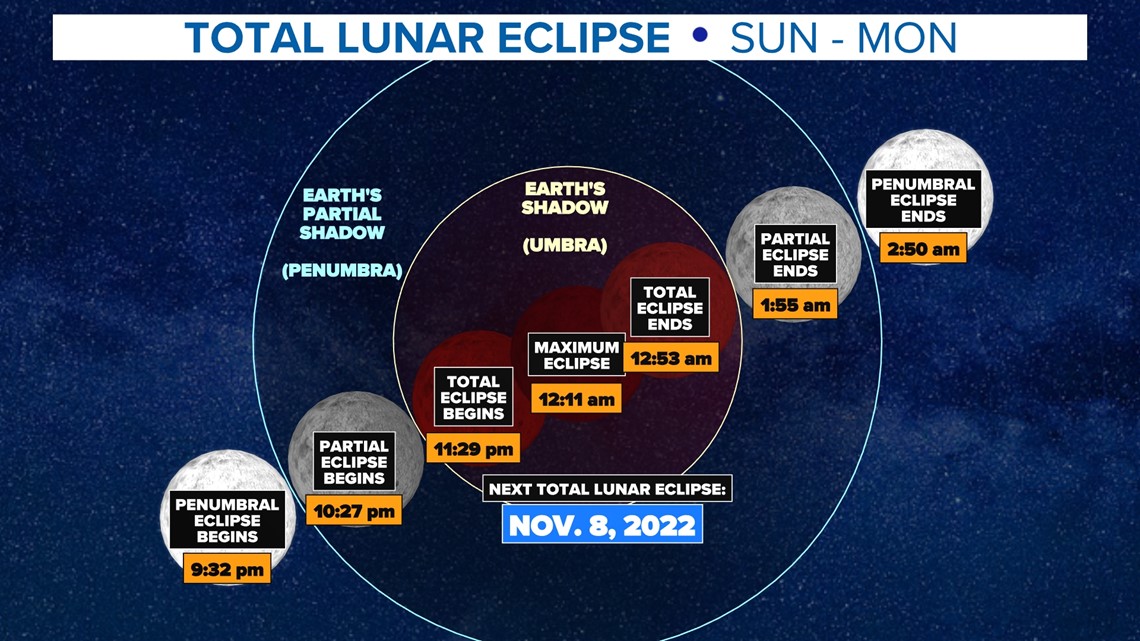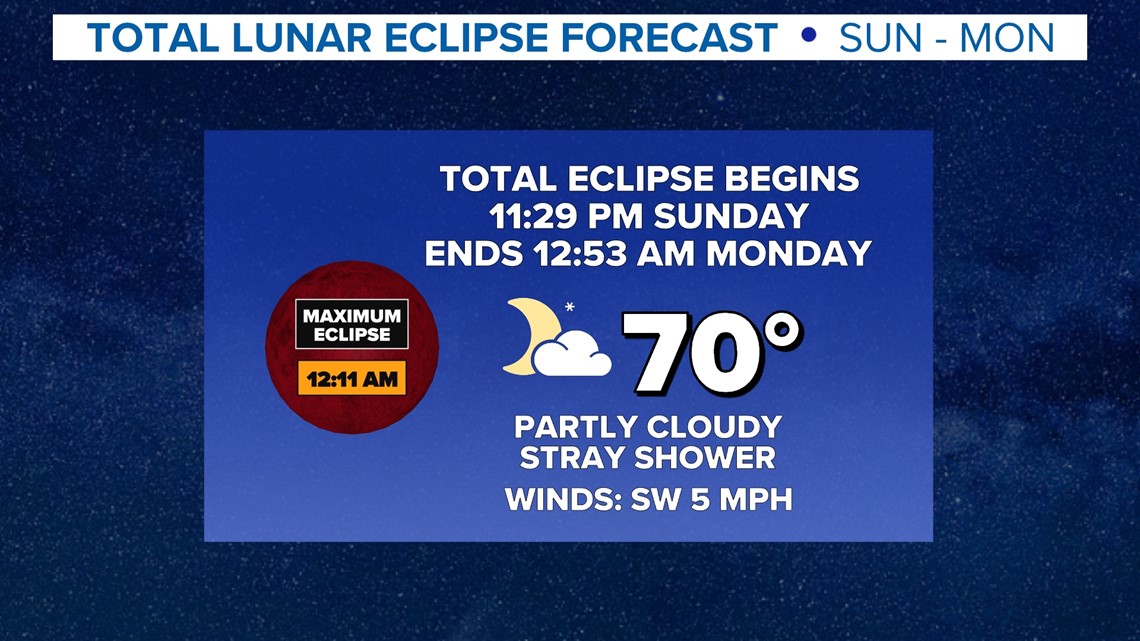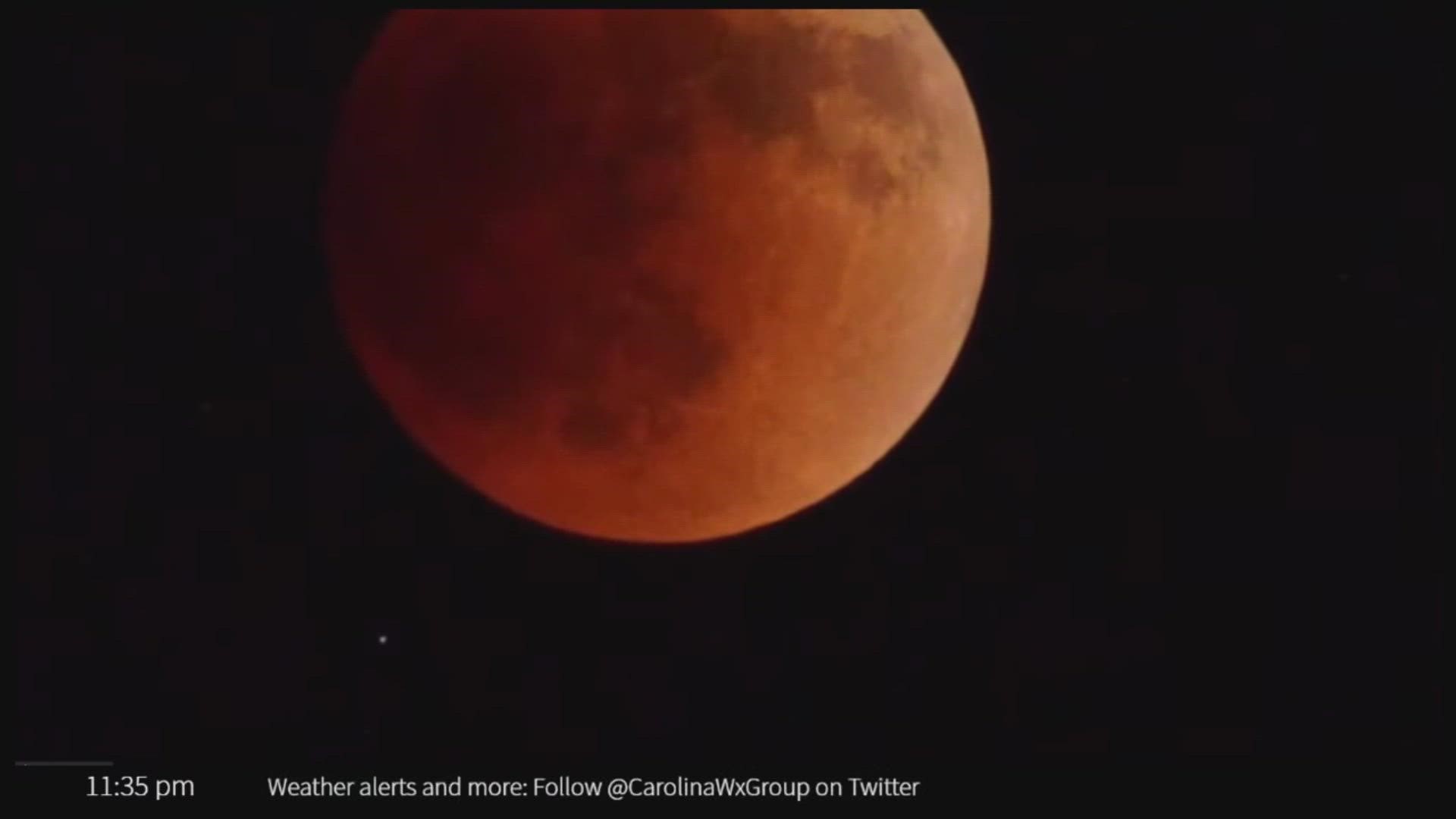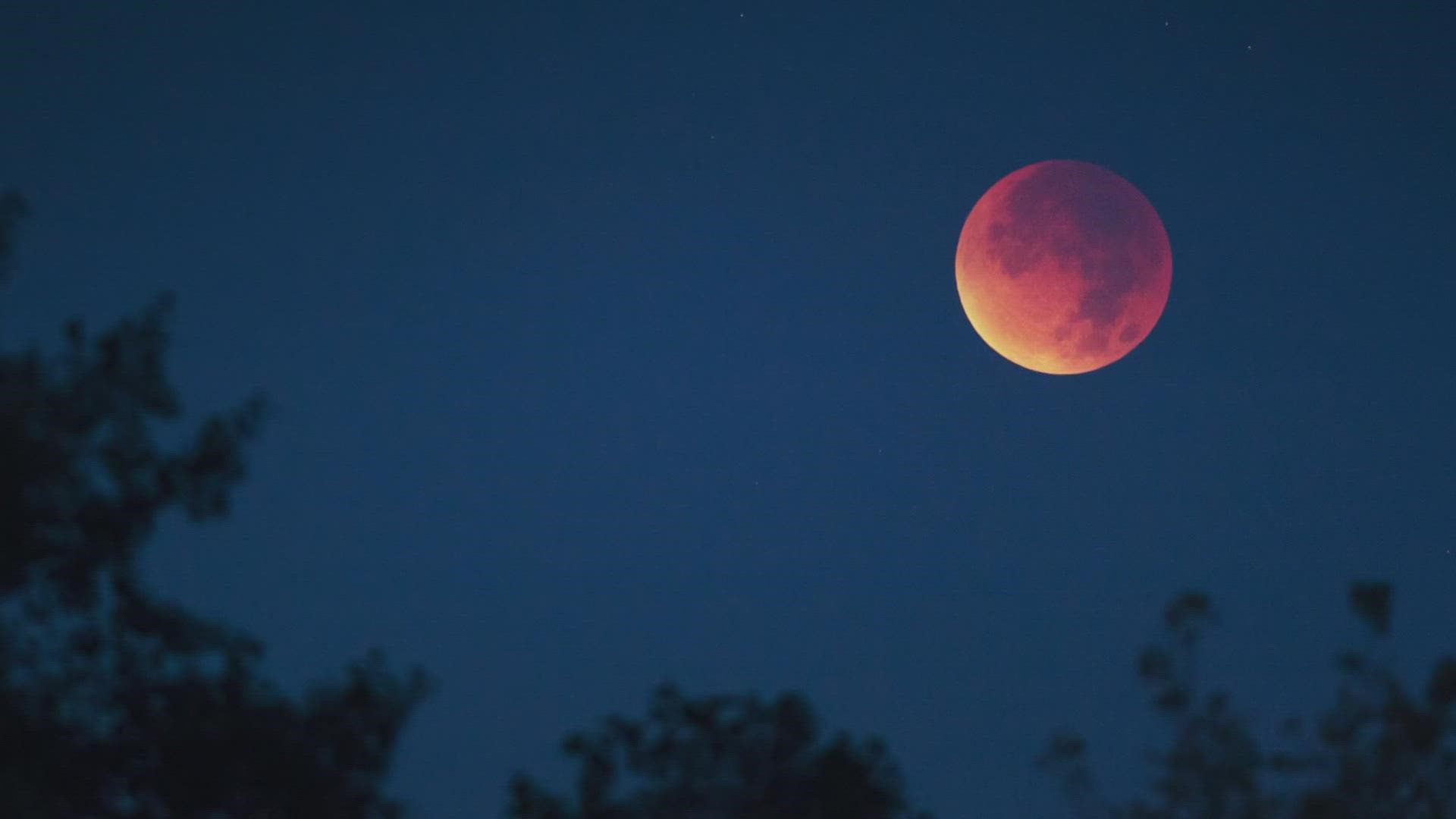CHARLOTTE, N.C. — The mainland United States, including both North Carolina and South Carolina, had the wonderful opportunity to see a total lunar eclipse late Sunday night and early Monday morning.
A total lunar eclipse occurred when the Moon passes into the Earth’s shadow, which is also called the umbra.
Although lunar eclipses are not rare, Sunday's eclipse was particularly interesting because of the time of day and the position of the moon.
A partial eclipse began at 10:27 p.m. et with the total eclipse beginning at 11:27 p.m. By 12:11 a.m., the moon was fully eclipsed with shining bright red.
While later in the evening, these times make viewing more convenient that eclipses overnight.
During the eclipse, the moon turned red. Liz Klimek, the planetary manager at the South Carolina State Museum, described the eclipse as the moon imitating Mars, since the moon will appear as a Martian-like orange-red hue.
“When you're in the deepest part of Earth's shadow, what happens is you have a little bit of sunlight still trickling past the edges of the earth,” Klimek explained. “That light goes through our atmosphere and our atmosphere is really good at scattering out the blue light and just letting the reddish part pass through.”
Why have I seen it referred to as a “super flower blood moon” eclipse?
A “blood moon” occurs during a total lunar eclipse because of the reddish hue. The “super” part comes from the moon being full. This will make the moon slightly larger and brighter. The eclipse will occur as the moon and Earth pass at their closest points in orbits. This is called the perigee.
"Flower” comes from this being the full moon in May. This signifies the flowers that bloom in the Northern Hemisphere during the month of May.


When will things kick off?
In Charlotte, the partial eclipse began around 10:27 p.m. The total eclipse started around 11:29 p.m., with the maximum eclipse just after midnight. The total eclipse ended around 12:53 a.m. Monday morning and the partial eclipse ended closer to 2 a.m.
So, unlike the total solar eclipse back in 2017, this lunar eclipse lasted much longer than a few minutes.
Visibility forecast
The weather forecast for Sunday night brought partly cloudy skies with mild temperatures in the upper 60s and low 70s by midnight. Passing clouds temporarily blocked views. However, the clouds were largely scattered and visibility resumed after a few minutes in many locations.
How rare is a lunar eclipse?
Although you may have seen crazy posts on social media like “once in a lifetime” and “extremely rare” – that’s just clickbait. On average, there are two lunar eclipses a year – but they’re not all total lunar eclipses.
There is one later this year on November 8, 2022. However, Matthew Whitehouse, the observatory manager, and Klimek both told WCNC Charlotte the moon won’t be positioned high enough in the sky. In November, we wouldn’t have an opportunity to see the eclipse from start to finish.
The two experts said it’s worth getting outside for this event. The next total lunar eclipse isn't until March 14, 2025.
Do I need special eyewear?
Absolutely not.
“It's also totally safe to look at the moon and the night sky when it's eclipsed,” Whitehouse said. “Nothing really changed about the moon in terms of viewing safety.”




